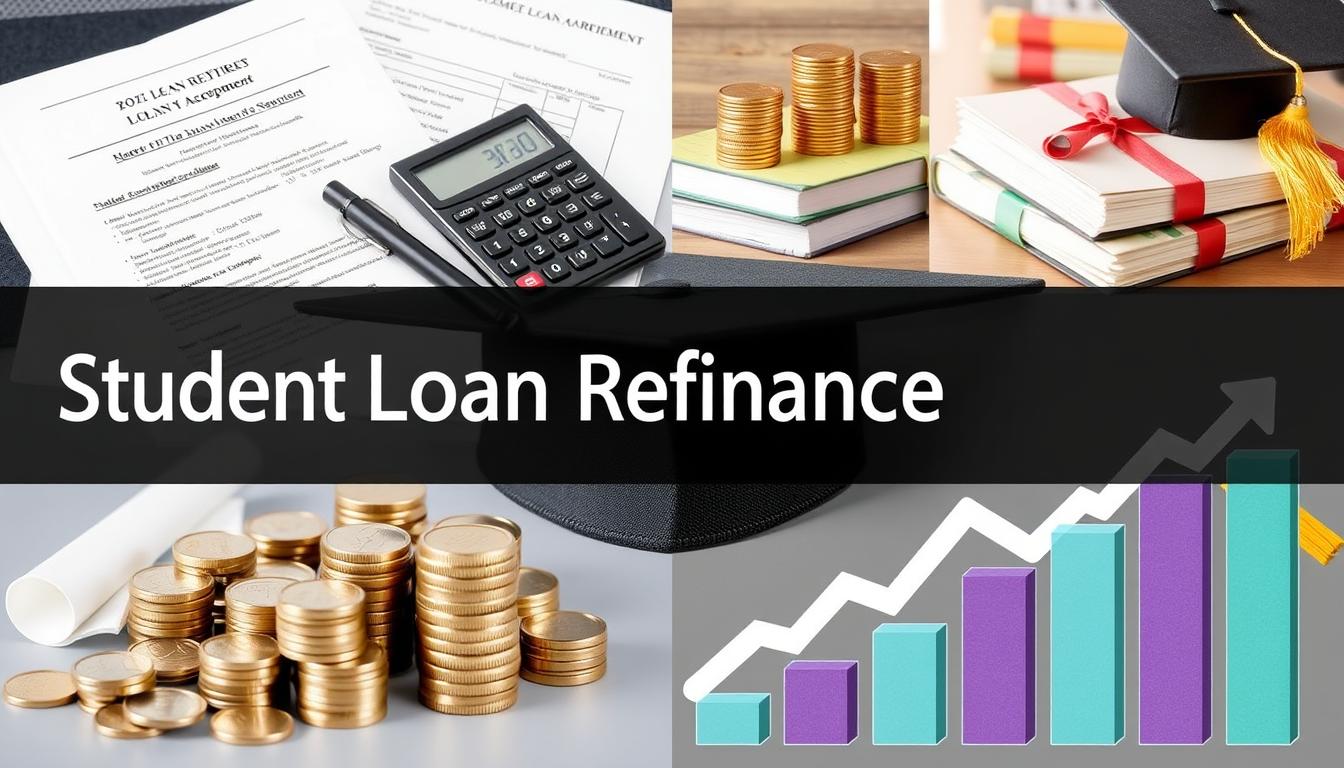Did you know experts with over 17 years of experience help you choose the right credit card? With more than 1,500 options, picking the best can be tough. This guide will help you find the top credit card offers for your needs.
We’ll look at different types of credit cards, like those with 0% APR, rewards, and balance transfer options. Whether you’re searching for the latest offers or comparing them, this guide has you covered.
We’ll explore top picks like the Wells Fargo Active Cash Card and the Chase Freedom Unlimited Card. WalletHub offers free credit score checks and tracks over 1,500 offers. You can trust the information is up-to-date.
Key Takeaways
- There are over 1,500 credit card offers available, making it important to compare credit card offers to find the best one for your needs.
- Experts with more than 17 years in the industry provide credit card information to help individuals make informed decisions.
- The best credit cards typically require a credit score of 700 or higher.
- WalletHub offers free credit score checks and tracks over 1,500 credit card offers to help you find the best credit card offer.
- Avoiding unnecessary features like cash advance fees and balance transfer fees is advised when choosing a credit card offer.
- Comparing credit card offers is key to finding the best one for your financial goals.
Understanding Today’s Credit Card Offers Landscape
The world of credit card offers has changed a lot in recent years. Now, there are many different types of cards, like cashback, travel, and balance transfer cards. Each type meets different needs, making it key to know what’s out there.
Today, trends show that Buy Now, Pay Later (BNPL) services are getting popular. Over a third of U.S. consumers have tried them, says Insider Intelligence. Also, while interest in crypto rewards cards has dropped, security is a big focus for card companies. They’re using new tech like two-factor and biometric authentication to keep transactions safe.
Some top credit card offers include:
- Cashback cards, like the Capital One Savor, give 8% back on certain purchases
- Travel cards, such as the Capital One Venture, offer 75,000 miles after spending $4,000 in 3 months
- Balance transfer cards have 0% APRs for a set time
The current trends in credit card offers are influenced by what people want, new tech, and the economy. As the market keeps changing, it’s important for consumers to keep up. This way, they can make smart choices about their credit cards.
| Credit Card | Rewards Rate | Introductory APR |
|---|---|---|
| Capital One Savor Cash Rewards Credit Card | 8% cash back on Capital One Entertainment purchases | 0% for 15 months |
| Capital One Venture Rewards Credit Card | 5 miles per dollar on hotels, vacation rentals, and rental cars booked through Capital One Travel | 0% for 15 months |
How to Compare Credit Card Offers Effectively
To compare credit card offers well, you need to look at a few important things. These include the APR, fees, and rewards. Look for cards with low or no annual fees. These can make a big difference in the card’s value.
Also, check the rewards structure. Some cards give more rewards in certain categories, like restaurants or travel.
When you compare, don’t forget to read the fine print. Look at the intro APR, the ongoing APR, and any fees. This way, you can pick the best card for you.
Some important things to think about when comparing credit card offers are:
- Intro APR period and ongoing APR rate
- Annual fee and any associated fees
- Rewards structure and earning ability
- Foreign transaction fees and other charges
By looking at these points, you can find a card that fits your needs. Whether you want rewards, to save on interest, or to build credit, there’s a card for you.
Exploring 0% APR Credit Card Offers
0% APR credit cards can help manage debt and save on interest. With average interest rates over 21%, finding good options is key. These cards offer a 0% intro APR, helping you save money and pay off debt quicker.
These cards have many benefits. For example, you can pay off existing debt or make new purchases without interest. This is great for consolidating debt or financing big purchases. Cards like the Capital One VentureOne, Chase Freedom Unlimited, and American Express Blue Cash Everyday are popular choices.
To get the most from 0% APR cards, know the terms. Look at the 0% intro APR period, the regular APR, and any fees. Choosing a card with a long intro period and a good regular APR can maximize benefits.
Top Cards with Extended 0% APR Terms
- U.S. Bank Visa Platinum: 0% intro APR for 21 months
- Wells Fargo Reflect Card: 0% intro APR for 21 months
- Discover it Cash Back: 0% intro APR for 15 months
Exploring 0% APR credit card offers can lead to smart financial choices. These cards offer savings and flexibility, helping you manage your finances better.
Maximizing Rewards Credit Card Offers
To get the most from rewards credit cards, knowing how to maximize rewards is key. This means spending wisely, using rewards-earning credit cards for everyday purchases. Welcome bonuses can be huge, sometimes over 100,000 points.
Issuers spend a lot to get new customers. They offer retention bonuses to keep current ones. Citi, for example, sends out special offers by mail and email. These offers give bonus points for specific purchases.
Shopping portals are another way to earn points. They let you earn bonus points when you shop online at many retailers.
Here are some tips to make the most of rewards credit cards offers:
- Leverage reimbursement options for travel expenses to accumulate points
- Use credit card rewards cards for daily expenses to optimize returns
- Take advantage of shopping portals and targeted offers
Understanding how to turn spending into rewards credit cards rewards is important. Choosing cards with flexible redemption options helps too. Whether it’s cash back, travel points, or other rewards, credit card rewards can offer big benefits when used smartly.
| Credit Card | Rewards | Annual Fee |
|---|---|---|
| Citi Double Cash | 2% cash back | $0 |
| Chase Freedom Flex | 5% cash back on rotating categories | $0 |
| Chase Sapphire Preferred | 2X points on travel and dining | $95 |
Balance Transfer Credit Card Opportunities
Understanding balance transfer credit cards is key. They can save you money on interest and help you pay off debt quicker. But, balance transfer fees can add up, so it’s important to calculate your savings.
For the best results, find cards with low or no balance transfer fees and 0% intro APR. The Chase Freedom Unlimited® and Citi Diamond Preferred Card are good choices. They offer 0% intro APR for 15 and 21 months, respectively, on balance transfers.
Understanding Balance Transfer Fees
Balance transfer fees usually range from 3% to 5% of the amount transferred. To save on fees, look for cards with lower or no fees. For example, the Citi Double Cash Card has a lower balance transfer fee and 0% intro APR for 18 months.
Calculating Your Savings
To figure out your savings, consider the balance transfer fee, intro APR, and regular APR. Use online calculators or talk to a financial advisor to find the best card for you.
Timing Your Balance Transfer
Timing is critical for balance transfers. Transfer your balance during the intro APR period to save the most. Also, pay off your balance before the regular APR starts to avoid interest.
- Look for cards with low or no balance transfer fees
- Consider cards with 0% intro APR periods
- Calculate your savings using online tools or a financial advisor
Finding Credit Card Offers for Bad Credit
For those with bad credit, finding the right credit card can be tough. But, there are options like secured credit cards and store cards. These can help you build credit. They might have higher interest rates and fees, but they’re a chance to improve your credit score.
Some good options include the Credit One Bank® Platinum Visa® for Rebuilding Credit. It offers 1% cash back on eligible purchases. The Petal® 2 “Cash Back, No Fees” Visa® Credit Card gives 1% cash back on eligible purchases too. The Discover it® Secured Credit Card requires a $200 deposit and offers a 2% Cashback Bonus® on up to $1,000 in combined purchases each quarter at gas stations and restaurants.

When looking at credit card offers for bad credit, check the terms. Look at the APR, fees, and rewards. Secured credit cards often need a deposit, starting at $200. They offer a credit limit based on your deposit. Paying on time and keeping your credit utilization low can help you build credit and get better offers later.
When choosing a credit card for bad credit, consider these:
- APR rates, which can range from 14.49% to 35.99%
- Annual fees, which can range from $0 to $125
- Rewards structures, such as cash back or intro bonuses
- Minimum security deposit requirements
- Credit limit and the chance for increases over time
By looking at these factors and picking the right card, you can start building credit. This can help improve your financial situation.
No Annual Fee Credit Card Options
Choosing a credit card means looking at the annual fee. No annual fee credit cards can save you money. But, it’s key to check the card’s terms and conditions. The Chase Freedom Unlimited® and Chase Freedom Flex® are good examples. They offer bonuses and cash back rewards without an annual fee.
These cards have no annual fee and give cash back on all purchases. The Chase Freedom Unlimited® offers 1.5% cash back on everything. The Chase Freedom Flex® gives 5% cash back on certain categories and travel booked through Chase TravelSM. Always check for other fees like interest and late charges.
Here are some benefits of no annual fee credit cards:
- Save money on fees
- Earn cash back rewards on every purchase
- Enjoy 0% intro APR for a specified period
In conclusion, no annual fee credit cards are a smart choice for saving money. By looking at the card’s terms, you can find one that fits your financial goals.
| Credit Card | No Annual Fee | Cash Back Rewards |
|---|---|---|
| Chase Freedom Unlimited® Credit Card | Yes | Unlimited 1.5% cash back |
| Chase Freedom Flex® Credit Card | Yes | 5% cash back on bonus categories |
Exclusive Credit Card Offers and How to Qualify
To get exclusive credit card offers, you usually need a good credit score. This means a FICO score of 670 or higher. These cards often have annual fees, from $400 to $495. But they also offer great benefits like travel and dining credits.
For example, the U.S. Bank Altitude® Reserve Visa Infinite® Card gives up to $325 in travel and dining credits each year. The Platinum Card® from American Express offers up to $199 in statement credits for CLEAR® Plus. The Mastercard® Black Card™ gives 1.5% points for cash-back and 2% for airfare.
To qualify, check your pre-qualification with banks like American Express, Bank of America, or Capital One. They might ask for your name, address, birthdate, and Social Security number’s last four digits. Some cards, like the OpenSky® Secured Visa® Credit Card, offer preapproval without hurting your credit score.
| Credit Card | Annual Fee | Credits and Rewards |
|---|---|---|
| U.S. Bank Altitude® Reserve Visa Infinite® Card | $400 | Up to $325 in annual travel and dining credits |
| The Platinum Card® from American Express | $495 | Up to $199 in annual statement credit for enrollment in CLEAR® Plus |
| Mastercard® Black Card™ | $495 | 1.5% points worth toward cash-back redemptions and 2% points worth toward airfare redemptions |
Understanding the needs and perks of exclusive credit cards helps you choose the best one for you.
How to Evaluate Cashback Credit Card Offers
When looking at cashback credit cards, it’s key to think about a few things. These cards give you a certain percentage back on what you spend. This makes them perfect for daily shopping. You need to look at the cashback rate, what you can get rewards for, and how to use those rewards.
Some cards, like the Wells Fargo Active Cash® Card, give you 2% cash back on everything with no yearly fee. Others, like American Express and Capital One, offer at least 1.5% back on all purchases. Think about how you spend money and what you like to do to get the most rewards.
Here are some important things to think about when looking at cashback credit card offers:
- Cashback rate: Look for cards with high cashback rates, such as 2% or 1.5% back on all purchases.
- Rewards categories: Consider cards that offer higher cashback rates in specific categories, such as groceries or gas.
- Redemption options: Choose cards with flexible redemption options, such as statement credits or direct deposits.
By carefully looking at these points and thinking about what you need, you can find the best cashback credit card for you. Always check the terms and conditions of any card before applying. Also, think about interest rates, fees, and credit limits to make sure you’re getting a good deal.

With the right cashback credit card, you can earn a lot of rewards on your daily spending. By carefully choosing the right card for your lifestyle, you can get the most out of your cashback rewards. This way, you can enjoy the benefits of cashback credit cards.
| Credit Card | Cashback Rate | Annual Fee |
|---|---|---|
| Wells Fargo Active Cash® Card | 2% cash back on every purchase | $0 |
| American Express | 1.5% back on all purchases | Varies |
| Capital One | 1.5% back on all purchases | Varies |
Understanding Credit Card Interest Rates and Terms
Understanding credit card interest rates and terms is key to making smart choices. There are two main types of interest rates: variable APR and fixed APR. A variable APR can change, while a fixed APR stays the same. It’s important to check your credit card terms to see which one you have.
The annual percentage rate (APR) is how credit cards are compared. Credit card companies must tell you the APR before you start using the card. As of September 2024, the average APR was 24.74%. People with higher credit scores often get better interest rates.
To avoid interest, pay off your credit card balance every month. If you don’t, interest is charged, even with minimum payments. Using balance transfer cards with 0% interest can lower your fees if done right. Knowing about credit card interest rates and terms helps you manage your debt better.
Look out for important terms in your credit card agreement. These include the grace period and hidden fees like late payment or balance transfer fees. Being aware of these can help you avoid extra charges and use your credit card wisely.
Steps to Successfully Apply for Credit Card Offers
When applying for credit cards, it’s key to follow the right steps for approval. Start by checking your credit score and picking the right card. Keeping your credit utilization under 30% can help your score and approval chances.
To boost your approval odds, here are some tips:
- Space out credit card applications at least six months apart to avoid negatively impacting your credit score.
- Have a diversified credit history with various types of credit cards and loans.
- Consider a secured credit card if you have thin credit history or poor credit.
A credit card application asks for personal info like your name, address, and Social Security number. For business cards, you’ll need to share your business’s revenue and tax ID or EIN. By following these steps and tips, you can up your chances of a successful application and find the perfect credit card for you.
| Credit Score Range | Credit Category |
|---|---|
| 800-850 | Excellent |
| 740-799 | Very good |
| 670-739 | Good |
| 580-669 | Fair |
| 300-579 | Poor |
Common Credit Card Offer Mistakes to Avoid
When you apply for credit cards, knowing common mistakes is key. Avoiding mistakes like timing errors and missing important credit card terms is vital. This helps you make smart choices.
It’s important to read the fine print of each offer. Look at the interest rate, fees, and how you’ll pay back. This way, you get a deal that fits your needs and avoids trouble.
Don’t apply for too many cards at once. It can hurt your credit score. Also, missing or late payments can lead to fees and harm your score. Stay alert to these credit card mistakes and avoid mistakes to keep your score healthy.
Being informed and reviewing each offer’s terms is smart. This way, you dodge common credit card mistakes and choose wisely for your finances. Always focus on avoiding mistakes and think about the credit card terms before you apply.
Conclusion: Choosing the Right Credit Card Offer for Your Financial Goals
Choosing the right credit card is all about your financial goals and how you spend money. There are many cards out there, each with its own benefits. Whether you want to earn rewards, save on interest, or build credit, there’s a card for you.
Cash back cards can save you money on daily buys. Low-interest cards help manage debt. For those with bad credit, student or secured cards can help improve your score.
Finding the perfect card means knowing what you need. Look at fees, interest rates, and rewards. This way, you can pick a card that fits your financial goals and helps you succeed in the long run.
FAQ
What are the different types of credit card offers available?
There are many types of credit card offers. You can find cashback, travel, and balance transfer cards. The market keeps changing, making it more competitive.
How can I effectively compare credit card offers?
To compare credit card offers, look at the APR, fees, and rewards. Always read the fine print and understand the terms and conditions.
What are the benefits of 0% APR credit cards?
0% APR credit cards save you money on interest. They offer introductory periods where you can avoid interest charges. This helps you pay off debt faster.
How can I maximize rewards from my credit card offers?
Choose the right rewards credit card for you. Earn rewards strategically and redeem them effectively. Knowing the rewards program well can maximize your benefits.
What are the benefits of balance transfer credit cards?
Balance transfer credit cards save you money on interest. They offer 0% APR on balance transfers for a promotional period. This lets you focus on paying down your debt without extra interest.
How can I find credit card offers for bad credit?
Even with bad credit, you can find credit card offers. Look into secured credit cards and store cards. They can help you build or rebuild your credit history.
What are the benefits of no annual fee credit cards?
No annual fee credit cards save you money on fees. But, make sure to check the APR and rewards program too.
How can I qualify for exclusive credit card offers?
Exclusive credit card offers need premium card requirements. This includes high credit scores and income levels. Some offers are invitation-only, so it’s key to know the qualifications and application process.
How do I evaluate cashback credit card offers?
When looking at cashback credit card offers, consider the cashback rate and rewards categories. Also, check the redemption options. Understanding these details helps you pick the best card for your spending and financial goals.
What are the common mistakes to avoid when applying for credit card offers?
Avoid timing errors and overlooking important terms and conditions when applying for credit card offers. Carefully review the details and follow the application steps to increase your approval chances.
Source Links
- Credit cards: Find the Right Card For You at Creditcards.com – https://www.creditcards.com/
- Credit Card Offers for 2025: Choose & Apply Online – https://wallethub.com/credit-cards/
- Changes in the Credit Card Landscape: Trends, Tech, and Spending – https://www.americanexpress.com/en-us/credit-cards/credit-intel/credit-card-uses/
- Best Rewards Credit Cards of January 2025 – Bankrate – https://www.bankrate.com/credit-cards/rewards/best-rewards-cards/
- Best Credit Cards of January 2025 | Bankrate – https://www.bankrate.com/credit-cards/best-credit-cards/
- Side by Side Credit Card Comparison – NerdWallet – https://www.nerdwallet.com/compare/credit-cards
- How to Pick the Best Credit Card for You: 4 Easy Steps – NerdWallet – https://www.nerdwallet.com/article/credit-cards/how-to-pick-the-best-credit-card-for-you-4-easy-steps
- The best 0% APR credit cards for 2025 – https://finance.yahoo.com/personal-finance/credit-cards/article/best-0-apr-credit-cards-183844780.html
- 13 Best 0% APR Credit Cards of January 2025 | Bankrate – https://www.bankrate.com/credit-cards/zero-interest/best-zero-interest-cards/
- Maximizing credit cards to become points-rich without spending a ton – The Points Guy – https://thepointsguy.com/credit-cards/maximizing-cards-earn-without-high-spending/
- How To Maximize Your Credit Card Rewards | Bankrate – https://www.bankrate.com/credit-cards/rewards/maximize-credit-card-rewards/
- How to Make the Most of Rewards Credit Cards – NerdWallet – https://www.nerdwallet.com/article/credit-cards/make-most-rewards-credit-cards
- Balance Transfer Credit Cards: Compare Offers – https://creditcards.chase.com/balance-transfer-credit-cards
- Best Balance Transfer Credit Cards of 2025 – Experian – https://www.experian.com/credit-cards/best-balance-transfer/
- 14 Best Balance Transfer Cards With 0% APR Of January 2025 – https://www.bankrate.com/credit-cards/balance-transfer/best-balance-transfer-cards/
- Best Credit Cards for Bad Credit of 2025 – Experian – https://www.experian.com/credit-cards/best-for-bad-credit/
- Best unsecured credit cards for bad credit – https://www.cnbc.com/select/best-unsecured-credit-cards-bad-credit/
- Compare No Annual Fee Credit Cards – https://creditcards.chase.com/no-annual-fee-credit-cards
- Best No Annual Fee Credit Cards for January 2025 | Bankrate – https://www.bankrate.com/credit-cards/rewards/best-no-annual-fee-cards/
- The most exclusive credit cards on the market right now – https://www.cnbc.com/select/most-exclusive-credit-cards/
- Credit Cards That Offer Preapproval Without a Hard Pull – NerdWallet – https://www.nerdwallet.com/article/credit-cards/credit-cards-that-offer-preapproval-without-a-hard-pull
- Evaluating Credit Card Reward Programs – https://www.calamos.com/globalassets/media/retirement/evaluating-credit-card-reward-programs.pdf
- How to Compare and Evaluate Credit Card Offers | MMI – https://www.moneymanagement.org/blog/how-to-evaluate-credit-card-offers
- What Is the Standard Cash-Back Rate for Credit Cards? – NerdWallet – https://www.nerdwallet.com/article/credit-cards/cash-back-credit-cards-1-point-5-percent-new-standard
- Credit cards key terms | Consumer Financial Protection Bureau – https://www.consumerfinance.gov/consumer-tools/credit-cards/answers/key-terms/
- Understanding Credit Card Interest – https://www.investopedia.com/articles/01/061301.asp
- Getting Your Credit Card Application Approved – NerdWallet – https://www.nerdwallet.com/article/credit-cards/10-tips-credit-card-application-approved
- How To Apply For A Credit Card And Get Approved | Bankrate – https://www.bankrate.com/credit-cards/advice/how-to-apply-for-a-credit-card/
- How to apply for a credit card and get approved in 5 easy steps – https://www.cnbc.com/select/how-apply-credit-card-and-get-approved/
- Top Credit Card Mistakes to Avoid (and How to Stay on Track) – Quail Creek Bank – https://quailcreek.bank/top-credit-card-mistakes-to-avoid-and-how-to-stay-on-track/
- 10 credit card mistakes to avoid in 2024 | Bankrate – https://www.bankrate.com/credit-cards/advice/credit-card-mistakes-roundtable/
- 10 common credit card mistakes you may be making and how to avoid them – https://www.cnbc.com/select/common-credit-card-mistakes/
- The Ultimate Guide to Choosing the Right Credit Card for Your Lifestyle – Diversified LLC – https://diversifiedllc.com/credit-cards/choosing-the-right-credit-card/
- How To Choose The Right Credit Card | Bankrate – https://www.bankrate.com/credit-cards/advice/how-to-choose-your-next-credit-card/
- Choosing the Right Credit Card: A Comprehensive Guide – https://njfcu.org/choosing-the-right-credit-card/








